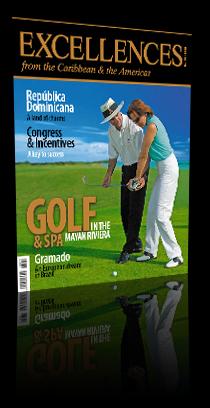Congres and Meetings. A key to success
Each year the Meetings, Incentives, Congress and Events (MICE) niche tightens its grip as an ever-growing activity in the realm of tourism worldwide. It only takes a long look at the number of specialized fairs held in different countries on a yearly basis, check out the calendars of events from the many international associations related to this theme or skim through the programs these institutions put together to bear this out.
Statistics from the International Congress and Convention Association (ICCA) shed far more light on this assertion even though these figures do not embrace the whole universe of meetings and they only comprise those institutions that meet the organization’s requirements. In other words, stats are just about events that are hosted in at least three different nations, which are planned and held on a regular basis and gather no less than 50 attendants.
At the same time, there’s a broad amount of gatherings that never make it to these reports, so each and every country or city should reckon its own estimates about how much this activity actually accounts for in their own conditions. But the ICCA statistic reports do lay bare trends because they include the largest chunk of all these meetings and, therefore, they ought to be taken into account.
The number of events logged in its database has accrued dramatically in recent years. In a continental breakdown —even though attendance quotas have dwindled over the past years— Europe still amasses more than half of all reported meetings (55.7 percent in 2007). In a similar country-by-country assessment, the U.S. and Germany have been leading the pack since 2004 in terms of volume of events, while Spain climbed from the fifth spot in 2006 to the third in 2007 with 307 international events under its belt, a figure that makes this country one of the world’s top 5 sought-after MICE destinations.
On the race to grab the biggest piece of the pie, Latin America has positioned itself as a developing region in this particular activity as more countries and cities are getting better prepped up to host events, more conventions and visitors bureaus are popping up all across the region, comfier and larger convention centers are being built, and an increasing number of hotels are outfitted with congress facilities. Furthermore, Latin American nations have stepped up their attendance to major international fairs, they now capture a larger amount of events and far more experts from the region have engrossed the rank and file of the different international associations.
A second glimpse at the ICCA stats shows Brazil holding place number eight worldwide in 2007, while other countries from the region are somewhere between the 23rd and the 51st spots on the ranking list (Mexico, Argentina, Chile, Colombia, Uruguay, Ecuador and Cuba). And as far as cities are concerned, Sao Paolo is 23rd on the overall list —the best Latin American burg of all.
The region’s market share in terms of events planned by associations has jumped from little more than 6 percent to 8.3 percent in 2007. The only fact still undetermined is how much of this growth belongs to a real increase in the number of events and how much has to do with information feedback, an undone homework from the past that actually sheds plenty of light on the true advance of the sector.
Either way, one thing is crystal clear: the different authorities are now far more aware of the importance of this travel industry’s segment to their home economies, of how much they chip in to the development of their cities, let alone the unfathomable benefits of the exchange of ideas and knowledge among professionals from different fields. The hard work of the Conventions and Visitors Bureaus, together with local authorities and associations, in capturing events for their venues all over Latin America is more visible than ever before.
Sometimes they don’t even need to seek those events outside their regional boundaries because an increasing amount of Latin American, Caribbean and Pan American associations change venues every year, so any of these nations could perfectly host that particular meeting or event.
Latin America shows off a vast diversity of climates, natural sceneries and a huge cultural wealth that become perfect to organize any kind of event in the region, not to mention the fact that it counts on specialized, highly-qualified personnel in the kind of services necessary for the organization and planning of events. What needs to be put to the test now is the ability and willingness of the region’s countries to share all available MICE information and play ball in the training of our experts.
A good testing platform was the First Latin American Meeting of Conventions and Visitors Bureaus, convened by the Rosario Conventions and Visitors Bureau and held recently in that Argentine like-name city. The event was attended by representatives from the different conventions and visitors bureaus across the region and discussions broached the need to cooperate and take a number of actions that will eventually let these countries net a bigger share of the MICE market. Participants agreed to hold the follow-up meetings in Brazil in 2009 and in Paraguay in 2010, hoping they will help strengthen Latin America’s stance as a successful destination in the congress and convention business.























































































































